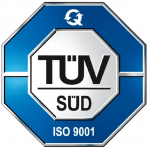As the world transitions to renewable energy, there is equal focus on the issue of energy storage. The renewable energy market is expected to reach 2 Trillion USD by 2030. There are growing concerns about its sustainability. Firms now funnel more money into developing cost-effective and high-performance energy storage systems.
Let’s see a brief overview of the top 5 trending innovations in energy storage that will help overcome the variability in renewable energy production.
Advanced Lithium-Ion Batteries:
From Lead-Acid batteries, there was a shift to the usage of Lithium-ion batteries. Lithium-Ion batteries offer over 1500 charging cycles at 90% depth of charge. They are also 2-3X lighter than Lead -Acid batteries. They need little to no maintenance when used in off-grid Solar and Wind. They are also the most compatible storage systems for integration with the current electrical systems like charge controllers, AC converters, etc.
But, they are not without their shortcomings. They are flammable, extremely sensitive to high temperatures, and need discharge protection. A lot of research has gone into manufacturing advanced Lithium-Ion batteries. The traditional Lithium-Cobalt electrodes are replaced with lighter, and more energy-dense alternatives like li-polymer, li-titanate, li-air, and li-sulfur. This enhances their performance. Similarly, technology that allows super-fast charging of the batteries is also available.
Recycling Li-ion batteries also has good potential. It helps avoid releasing the acids and heavy metals into the environment. from improper disposal methods. A Singapore-based firm is recycling the batteries to produce battery cathode.
Lithium Alternatives
Despite their popularity, disposal of Lithium-Ion batteries is still a major concern. Lithium mining contaminates surface water and air. It causes acid rain in the arid areas where the metal is extracted. The alternatives with promising results are Zinc-air and Sodium-sulfur batteries. Zinc is a stable metal with low toxicity and is abundantly available.
Other alternatives are Aluminium-ion, Magnesium-ion, Nickel-Zinc, and Silicon batteries. They feature longer lifespans, higher charging cycles, and a high energy density. Batteries made with Zinc gel have high-conducting zinc electrolyte and a carbon-based cathode.
Sodium-ion batteries have proved to be the better technology when it comes to high energy storage. They use a powder of sodium-vanadium phosphate fluoride with a specific crystal structure in the battery cathode. These batteries are self-healing, resistant to high temperatures, non-flammable, and sustainable.
Solid-State Batteries
All conventional battery technologies use liquid electrolytes. Liquid electrolytes are highly flammable and have low charge retention. They also pose a serious environmental threat. But Solid-state batteries come with enhanced range, charging cycles, and electrochemical and thermal stability. SS Batteries use solid-state polymer-based electrolyte material that facilitates ion migration. The materials also meet high voltage and high capacity standards. The batteries feature increased ion mobility, using a combination of polymers and ionic materials.
These materials are energy-dense and have a high power-to-weight ratio. They are also portable with a longer shelf life. This makes SS Batteries a viable solution in EV technology.
A promising outcome of research in this area is solid-state crystal sulfur batteries. Direct Crystal Imprinting technology is used to manufacture wafers from molten sulfur. These batteries have long shelf lives, faster-charging properties, and are cost-effective and safe. They can be made in any size and are used in nearly every technology from smart phones to airplanes.
Advanced Thermal Energy Storage
Renewable Energy storage is still in its starting stages. Energy storage could balance the variability in renewable energy production. This balance needs to be executed in a cost-effective manner. Conventionally in thermal storage, hot or cold water is stored in insulated tanks. The stored water is released for later use. This enables peak demand management for heating or cooling as per the conditions of the location.
But the recent technology employs materials like molten salt, eutectic and phase-changing materials to store heat. The stored heat is derived from Solar thermal systems to meet night-time energy demands.
A Hungarian firm uses phase-changing materials with alternative melting and solidification to store thermal energy. By balancing the efficiency of the HVAC systems, they are able to save space and cost, making the tech affordable to everyone.
Distributed Storage Systems
Using Distributed Storage systems, we can overcome the grid failure risks associated with traditional energy generation and storage systems. DSS facilitates individual energy production and storage on-site. Any excess energy produced is sold back to the grid. These include solutions like EVs, Micro-grids, and Virtual Power Plants (VPPs). Distributed Storage Systems encourage the use of renewable tech by integrating local energy storage solutions like rooftop solar systems and small-scale wind power production systems.
These work great where access to the conventional power grid isn’t reliable. There is higher efficiency since the power production is on-site and there are no transmission losses. It is easy to manage peak demands and loads while simultaneously capitalizing on the excess energy produced. This technology can greatly reduce the reliance on fossil fuel energy. It shows potential in Vehicle-to-Grid (V2G) management, with optimized fleet charging and reduced grid impact.
These 5 trending energy storage technologies offer a high return on investment. They can reverse the environmental impact caused by the energy industry. The tech is still under development, and early investors and adopters can capitalize on the government incentives and policies framed to promote them.




